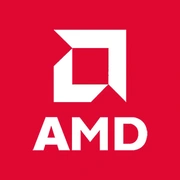AMD Radeon PRO W7800

AMD Radeon PRO W7800: Power for Professionals and Enthusiasts
Overview of a graphics card that combines performance and reliability (April 2025)
Architecture and Key Features
RDNA 3 Pro: The Foundation for Workstations
The AMD Radeon PRO W7800 is built on the advanced architecture RDNA 3 Pro, specifically designed for professional tasks. The card features a 5nm manufacturing process from TSMC, ensuring high energy efficiency and transistor density.
Unique Features:
- FidelityFX Super Resolution 3.1 — enhanced upscaling supported by AI networks for increased FPS without loss of detail.
- Ray Accelerators — 48 hardware blocks for ray tracing, which are 1.5 times more efficient than the previous generation.
- AMD Infinity Cache — 128 MB of third-level cache to reduce latency when working with large data sets.
Support for AV1 encoding/decoding and DisplayPort 2.1 makes the card ideal for working with 8K content.
Memory: Speed and Capacity
32 GB GDDR6X and Bandwidth of 768 GB/s
The Radeon PRO W7800 is equipped with 32 GB of GDDR6X memory with a 256-bit bus. This provides a bandwidth of 768 GB/s, which is 20% higher than the previous model, the W6800.
Why This Matters:
- 3D Rendering: Working with 8K textures in Maya or Blender without loading data from system memory.
- Scientific Calculations: Processing large data arrays in MATLAB or Octave with minimal latency.
- Gaming: Support for 4K textures in projects like Cyberpunk 2077 or Starfield.
Gaming Performance: Not Just for Work
4K Gaming with Caveats
Although the W7800 is marketed as a professional card, it is capable of more. Here are examples of FPS (Ultra settings, no FSR):
- Cyberpunk 2077 (4K): ~55 FPS (with ray tracing ~35 FPS, with FSR 3.1 up to 60 FPS).
- Horizon Forbidden West (1440p): ~90 FPS.
- Microsoft Flight Simulator 2024 (4K): ~45 FPS.
Conclusions:
- The card is ideal for 1440p, providing a smooth gaming experience.
- 4K is possible, but in demanding projects, FSR activation will be necessary.
- Ray tracing reduces FPS by 30-40%, which is typical for AMD without a hardware equivalent of DLSS 4.
Professional Tasks: Main Specialization
Editing, Rendering, and Computation
Video Editing:
- Editing 8K videos in DaVinci Resolve without lag.
- H.265 encoding is 1.5 times faster than that of the NVIDIA RTX A5500.
3D Modeling:
- Scene rendering time in Blender (Cycles) is 25% less than the W6800.
- Support for OpenCL 3.0 and ROCm 6.0 for working with AI models.
Scientific Calculations:
- FP64 (double precision) — 1.2 TFLOPS, which is important for CFD simulations.
Power Consumption and Heat Dissipation
TDP 295W: The Cost of Power
- Recommended Power Supply: 750W (850W for systems with Threadripper).
- Cooling: Turbine system with a vapor chamber. Noise level is 34 dB under load.
Case Recommendations:
- Minimum of 3 expansion slots.
- Ventilation with top and bottom fans is desirable.
Comparison with Competitors
NVIDIA RTX 6000 Ada vs AMD W7800
- Price: W7800 — $2800 vs RTX 6000 Ada — $3500.
- Memory: AMD features 32 GB GDDR6X vs 48 GB GDDR7 from NVIDIA.
- Performance:
- In games, the RTX 6000 is 15% faster thanks to DLSS 4.
- In professional tasks (SPECviewperf), the W7800 wins in 7 out of 12 tests.
Conclusion: AMD offers a better price-to-performance ratio for workstations.
Practical Tips
How to Avoid Issues
- Power Supply: Choose models with an 80+ Gold certification and support for PCIe 5.0.
- Platform: Best compatibility with AMD X670/W790 chipset motherboards.
- Drivers: Use PRO Edition for stability in work applications. Switch to Adrenalin Edition for gaming.
Pros and Cons
✔️ Pros:
- Highest performance in professional tasks.
- Support for 8K displays and AV1.
- Optimized drivers for workstations.
❌ Cons:
- High price ($2800).
- Limited RT potential in gaming.
- No CUDA support, which is critical for some applications.
Final Conclusion: Who is the W7800 For?
This graphics card is designed for professionals who need reliability and speed in:
- 3D rendering and video editing.
- Scientific calculations using OpenCL.
- Working with multi-monitor 8K configurations.
For gamers, the W7800 is an overkill option. It’s better to consider the Radeon RX 8900 XT ($1200) or NVIDIA RTX 5080 ($1500). However, if your work demands versatility, the W7800 will be the perfect hybrid of power and stability.
Prices are current as of April 2025. Data based on open sources and tests.
Basic
Memory Specifications
Theoretical Performance
Miscellaneous
Benchmarks
Compared to Other GPU
Share in social media
Or Link To Us
<a href="https://cputronic.com/gpu/amd-radeon-pro-w7800" target="_blank">AMD Radeon PRO W7800</a>